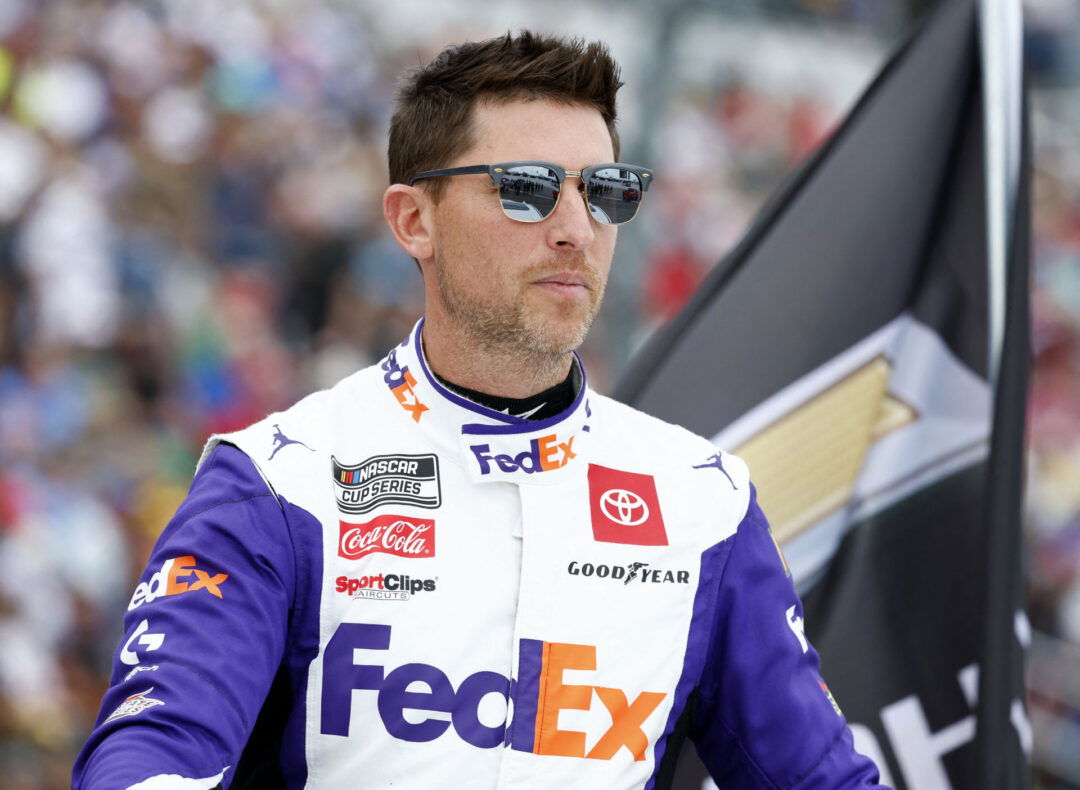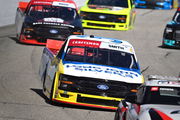
USA Today via Reuters
Feb 19, 2023; Daytona Beach, Florida, USA;NASCAR Cup Series driver Denny Hamlin (11) during driver introductions before the start of the Daytona 500 at Daytona International Speedway. Mandatory Credit: Mike Dinovo-USA TODAY Sports

USA Today via Reuters
Feb 19, 2023; Daytona Beach, Florida, USA;NASCAR Cup Series driver Denny Hamlin (11) during driver introductions before the start of the Daytona 500 at Daytona International Speedway. Mandatory Credit: Mike Dinovo-USA TODAY Sports
NASCAR is an expensive sport. Last year, Team Penske topped the charts in terms of sponsorship revenue. They cashed in US$140.94 million, buoyed mostly by Ryan Blaney’s dominant late-season run and Championship victory. They are followed by Richard Childress Racing, Joe Gibbs Racing, and others. This play with millions prompted a former Xfinity star to question the long struggle to gain more revenue.
Watch What’s Trending Now!
However, JGR driver Denny Hamlin begged to differ and countered with some thought-provoking words. Entering NASCAR and turning a few laps may suffice with what the current model affords teams. But being able to win is a wholly different story.
ADVERTISEMENT
Denny Hamlin’s argument is more grounded
As the end of 2024 is looming on the horizon, race teams are tightening their demands. Primarily, they want permanent charters and a greater slice of the revenue pie which NASCAR hogs. After the higher-ups signed a hefty $7.7 Billion media rights deal last November, race teams’ demands have picked up. Recently, Denny Hamlin quoted $18 Million which is just for putting a car on the racetrack every week. But Landon Cassill reverted on The Money Lap Podcast that NASCAR is not forcing teams to spend on unnecessary things like private jets.
NASCAR journalist Eric Estepp initially understood the angle from which Cassill argued. “NASCAR has the most leverage…It’s difficult for the teams to go to NASCAR and ask for a whole lot more money when NASCAR can see that they are spending a lot of money on all these maybe unnecessary details. Broadly speaking, Landon Cassill’s point makes sense.”
However, Landon Cassill did not take into consideration what it takes to run a winning team. Competing with heavyweights like JGR or Hendrick Motorsports requires a race team to stay up-to-date with the latest equipment. And the calls for a lot of money, so Estepp eventually agrees with Hamlin. “If you’re going to compete in a sport that Rick Hendrick, Roger Penske, and Joe Gibbs participate in, you better be willing to spend, spend, and spend just to remain remotely competitive. Sure, you could simply run a team on an $18 Million budget, but it won’t be a competitive team. You’ll run 25th to 30th.”
ADVERTISEMENT

USA Today via Reuters
Feb 16, 2024; Daytona Beach, Florida, USA; NASCAR Cup Series driver Denny Hamlin (11) during practice for the Daytona 500 at Daytona International Speedway. Mandatory Credit: John David Mercer-USA TODAY Sports
So Landon Cassill, who never scraped Victory Lane over the length of his racing career, overlooked that crucial point. Denny Hamlin gave him a detailed explanation, including intricate cost breakdowns that go into operating a race team like 23XI Racing. Many departments are very necessary like “business, marketing, sponsorship, social media,” and so many more. So Hamlin clearly has more ground-level experience than Cassill to make the argument.
ADVERTISEMENT
The debate also revealed a glimpse of NASCAR’s revenue situation. Earlier, the sport was very transparent – monetary values used to be displayed publicly. For instance, in 2010 International Speedway Corporation reported a revenue of $645 million, and rival Speedway Motorsports Inc. (SMI), reported $502 million in the same year. But ever since NASCAR went private in 2019, this transparent trend disappeared. Hence now with Denny Hamlin and Co. clamoring for a greater share, we are again getting a better understanding of the NASCAR revenue market.
Hamlin trumping Cassill’s argument has a real-life precedent – in the pit gun debate of 2018.
Top Stories
Greg Biffle’s $4M Prized Possession Goes Up for Sale After Tragic Crash, Leaving NASCAR Fans Heartbroken

NASCAR World Mourns as Former Watkins Glen President Michael Printup Passes Away at 60

Fox Broadcaster Pens Heartfelt Message as Veteran Announcer Quits NASCAR

Denny Hamlin Offers First Words Since Losing Beloved Father in Anniversary Fire

3x Indy 500 Champion Driver Eyes to Live 19-YO Dream With Surprise NASCAR Return

ADVERTISEMENT
NASCAR’s cost-saving led to faulty pit stops
In the years preceding 2018, Cup Series teams fell upon a unique strategy. They started spending lavishly and pouring more resources into building more efficient pit guns. Some teams drastically upped their game. Joe Gibbs Racing was considered to have the most innovative air gun program and the results showed it. However, NASCAR thought this created disparity on the racetrack. So it introduced a spec pit gun program as a cost-containment and competition-enhancing measure.
The consequences were disastrous. Kevin Harvick dominated the 2018 Atlanta race in the No. 4 Stewart-Haas Racing car. But the NASCAR-mandated pit guns got in his way – the air hose fell off the gun and prevented the tire changer from completely securing his tire. So a loose lug nut forced him to pit twice from the lead after the lap 30 competition caution.
This prompted Denny Hamlin to bash NASCAR’s faults, claiming the in-house guns were more reliable. “I think the reason teams built them on their own is because they were more reliable that way. They could control everything. That’s probably why; amongst the competition side of things, they don’t want to fail because it’s a bad luck thing. They want it to fail because they did a bad job. It’s your own fault then.”
ADVERTISEMENT
Evidently, NASCAR’s miserly approach does little to help talented drivers soar to Victory Lane. Hopefully, Denny Hamlin and his peers’ demands will see fruition for a better future for the sport.
ADVERTISEMENT
ADVERTISEMENT
ADVERTISEMENT

